Social-Political Issues
 |
 |
 |
 |
 |
 |
 |
Stalinism in Brazil - II
From Prestes to Lula, Mirroring
the Russian Scenario
I believe that in many ways Brazilian Communism mirrored the Russian scenario of the first part of the 20th century, described in my last article.
The three first decades of the century in Russia were the stage that incited a constant social turmoil necessary for the installment of Communism. There were numerous armed battles between the resistance group of White Russians against the Red Army. In addition, there were the power struggles among Lenin, Stalin and Trotsky.
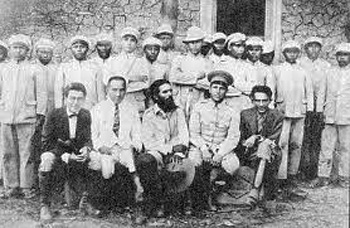 The Brazilian Communist Party (Partido Comunista Brasileiro – PCB) was founded in 1922 with Luiz Carlos Prestes as one of its founders.
The Brazilian Communist Party (Partido Comunista Brasileiro – PCB) was founded in 1922 with Luiz Carlos Prestes as one of its founders.
In what is now called the Lieutenant Rebellion, he led a group of lower officer corps to rebel against the agrarian structure of the country, but without success.
In 1924, this communist militant led a group of lieutenants on horseback through the countryside of many States of Brazil – the Prestes’ Column – against what he called the “oligarchy” of the country. Because of these two initiatives, both failures, he was exiled around 1930 to Argentina.
A year later, he went to Russia where he became more entrenched in the communist ideology. In 1935 he returned to Brazil with the aim to overthrow the nationalist Getúlio Vargas government.
An expressive manifestation of Stalinism in Brazil took place the year of Prestes’ return in 1935. Inspired by the International Communist, Prestes commanded a group of militants in a coup d’état to implant Communism in the country. The rebels were active in three States – Rio Grande do Norte, Pernambuco and Rio de Janeiro – in their attempt to take over the government.
Two dramatic episodes took place in the city of Rio de Janeiro, then capital of Brazil, in what is today called the Communist Uprising of 1935. The rebels attacked the Military Academy of Praia Vermelha killing many officers while they were sleeping. Others captured airplanes and tried to take off to bombard the city of Rio. In both cases the communists were unsuccessful in their attempts and the uprising was repressed.
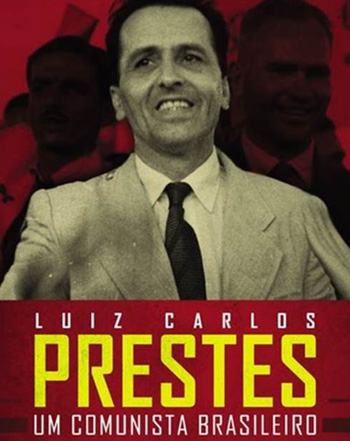 As a consequence of this coup, Prestes was imprisoned for 10 years. In 1945, he was freed and elected senator. Soon afterwards, however, the Communist Party was outlawed again and Prestes, who continued to take the hard line, entered clandestineness.
As a consequence of this coup, Prestes was imprisoned for 10 years. In 1945, he was freed and elected senator. Soon afterwards, however, the Communist Party was outlawed again and Prestes, who continued to take the hard line, entered clandestineness.
In 1958, he was allowed to return to the political scene, but in 1964 as a consequence of the anti-communist takeover by the military, he went back to the Soviet Union. He returned to Brazil in 1979, benefiting from a general amnesty.
Although he continued to be declared communist, he broke with the Brazilian Communist Party and supported the Brazil’s Democratic Labor Party.
In the meantime, the dispute in Russia over the Kruschev’s “de-stalinization” program in the ‘60s had repercussions in Brazil. The Brazilian Communist Party (PCB) adopted the Kruschev line, while the Maoists – who adopted the more hard-line communist doctrine of Mao Tsé Tung – formed the Communist Party of Brazil (PCdoB).
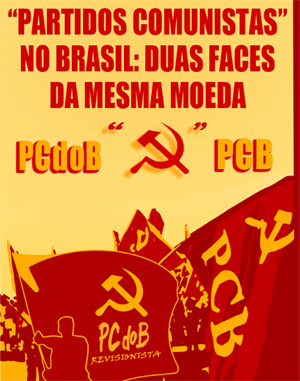 During that period there were many disputes among the leaders of Communism in Brazil over what direction it should follow: One side argued for a political route with an alliance with the “national bourgeoisie;” the other wanted to take over the government through guerilla urban warfare and armed revolution.
During that period there were many disputes among the leaders of Communism in Brazil over what direction it should follow: One side argued for a political route with an alliance with the “national bourgeoisie;” the other wanted to take over the government through guerilla urban warfare and armed revolution.
About 25 different organizations surfaced, all proposing different solutions, most of them violent; some advocating clearly terrorist actions. These organizations caused a great unrest in Brazil for several decades, resulting in countless bomb attacks, kidnappings of personalities to exchange for ransom, robberies of military facilities for weapons and bank robberies. At the same time guerrilla conflict was pursued relentlessly.
It is impossible not to compare this fracturing of the Communist Party with what that took place among Lenin, Stalin and Trotsky. Those three leaders often attacked one another as each tried to acquire more power and direct the communist movement. It was Stalin who became prevalent, and after Lenin’s death in 1924 he assumed full control of the Russian Communist Party and government.
The role of the Catholic left
In the ‘60s the Brazilian Catholic bishops and clergy took a vocal position against Capitalism and the agricultural and livestock production structure of the country. Many adopted the Marxist jargon on how the rich were exploiting the poor and began to call for “reforms of the structures.” Leading this movement was the charismatic leader Helder Camara, the “Red Archbishop” of the cities of Olinda and Recife.
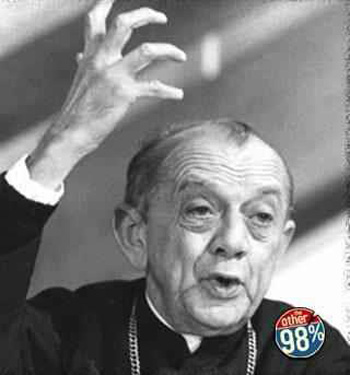 The religious adopted either a “reformist line” or a “revolutionary line.” In the first, the priests, monks and nuns would instigate and organize strikes and take part in public demonstrations on social and economic issues. The second was more directly communist and preached armed struggle. These two currents prepared the way for Liberation Theology, which in 1968 was “baptized” by Paul VI in Medellin, Colombia, and brought so much harm for South and Central Americas.
The religious adopted either a “reformist line” or a “revolutionary line.” In the first, the priests, monks and nuns would instigate and organize strikes and take part in public demonstrations on social and economic issues. The second was more directly communist and preached armed struggle. These two currents prepared the way for Liberation Theology, which in 1968 was “baptized” by Paul VI in Medellin, Colombia, and brought so much harm for South and Central Americas.
It was under the influence of both the Stalinist PCdoB, which infiltrated almost all the worker unions, and Liberation Theology, which had the support of the clergy, that Lula da Silva came to light in the last decades of the 20th century. A union leader, he was beneficiary of the Christian Base Communities – CBCs – which were supported by Catholic Prelates such as the Cardinal of São Paulo Evaristo Arns and the Bishop of Santo André, Cláudio Hummes (later Archbishop of São Paulo). The CBCs became a national force and, based on them and with the support of the PCdoB, Lula da Silva founded the Workers Party in 1980 (Partido dos Trabalhadores – PT) and run unsuccessfully for President three times before achieving victory in the 2002 election.
In 1980, Lula said: “Only strong parties and strong unions can prevent small groups from taking over the country and perpetuate themselves in the power.”
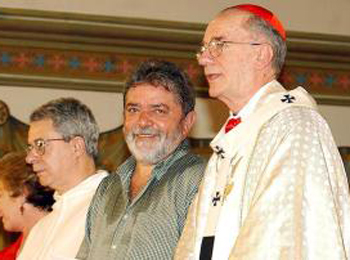 Showing his communist bent, Lula declared: “When we speak of Socialism the question soon arises: What type of Socialism? Some people have ready models in their minds: the Soviet, the Cuban, I could even say that I have a model in my mind. … But to it is still very difficult to make these simple people discuss Socialism, because what normally happens is that those who have fixed ideas in their minds try to shove them down the workers’ throat.”
Showing his communist bent, Lula declared: “When we speak of Socialism the question soon arises: What type of Socialism? Some people have ready models in their minds: the Soviet, the Cuban, I could even say that I have a model in my mind. … But to it is still very difficult to make these simple people discuss Socialism, because what normally happens is that those who have fixed ideas in their minds try to shove them down the workers’ throat.”
At this time he expressed one of the principles of his career as agitator: “We cannot eternally wait for the propitious moment for a strike. The one who creates the moment is the worker.”
With these few examples my reader has an idea of the debt Lula da Silva has toward both the Stalinist Communism and the Liberation Theology of the CBCs.
I hope in my next installment to delve further into this dependence.
To be continued

The three first decades of the century in Russia were the stage that incited a constant social turmoil necessary for the installment of Communism. There were numerous armed battles between the resistance group of White Russians against the Red Army. In addition, there were the power struggles among Lenin, Stalin and Trotsky.

Prestes, seated with beard, with a group of the insurgent lieutenants he led
In what is now called the Lieutenant Rebellion, he led a group of lower officer corps to rebel against the agrarian structure of the country, but without success.
In 1924, this communist militant led a group of lieutenants on horseback through the countryside of many States of Brazil – the Prestes’ Column – against what he called the “oligarchy” of the country. Because of these two initiatives, both failures, he was exiled around 1930 to Argentina.
A year later, he went to Russia where he became more entrenched in the communist ideology. In 1935 he returned to Brazil with the aim to overthrow the nationalist Getúlio Vargas government.
An expressive manifestation of Stalinism in Brazil took place the year of Prestes’ return in 1935. Inspired by the International Communist, Prestes commanded a group of militants in a coup d’état to implant Communism in the country. The rebels were active in three States – Rio Grande do Norte, Pernambuco and Rio de Janeiro – in their attempt to take over the government.
Two dramatic episodes took place in the city of Rio de Janeiro, then capital of Brazil, in what is today called the Communist Uprising of 1935. The rebels attacked the Military Academy of Praia Vermelha killing many officers while they were sleeping. Others captured airplanes and tried to take off to bombard the city of Rio. In both cases the communists were unsuccessful in their attempts and the uprising was repressed.

Prestes, later elected Senator,
celebrated as ‘a Brazilian Communist’
In 1958, he was allowed to return to the political scene, but in 1964 as a consequence of the anti-communist takeover by the military, he went back to the Soviet Union. He returned to Brazil in 1979, benefiting from a general amnesty.
Although he continued to be declared communist, he broke with the Brazilian Communist Party and supported the Brazil’s Democratic Labor Party.
In the meantime, the dispute in Russia over the Kruschev’s “de-stalinization” program in the ‘60s had repercussions in Brazil. The Brazilian Communist Party (PCB) adopted the Kruschev line, while the Maoists – who adopted the more hard-line communist doctrine of Mao Tsé Tung – formed the Communist Party of Brazil (PCdoB).

‘Communist Parties in Brazil : Two faces of the same coin’
About 25 different organizations surfaced, all proposing different solutions, most of them violent; some advocating clearly terrorist actions. These organizations caused a great unrest in Brazil for several decades, resulting in countless bomb attacks, kidnappings of personalities to exchange for ransom, robberies of military facilities for weapons and bank robberies. At the same time guerrilla conflict was pursued relentlessly.
It is impossible not to compare this fracturing of the Communist Party with what that took place among Lenin, Stalin and Trotsky. Those three leaders often attacked one another as each tried to acquire more power and direct the communist movement. It was Stalin who became prevalent, and after Lenin’s death in 1924 he assumed full control of the Russian Communist Party and government.
The role of the Catholic left
In the ‘60s the Brazilian Catholic bishops and clergy took a vocal position against Capitalism and the agricultural and livestock production structure of the country. Many adopted the Marxist jargon on how the rich were exploiting the poor and began to call for “reforms of the structures.” Leading this movement was the charismatic leader Helder Camara, the “Red Archbishop” of the cities of Olinda and Recife.

Helder Camara, the ‘Red Archbishop’ prepared the way for Liberation Theology
It was under the influence of both the Stalinist PCdoB, which infiltrated almost all the worker unions, and Liberation Theology, which had the support of the clergy, that Lula da Silva came to light in the last decades of the 20th century. A union leader, he was beneficiary of the Christian Base Communities – CBCs – which were supported by Catholic Prelates such as the Cardinal of São Paulo Evaristo Arns and the Bishop of Santo André, Cláudio Hummes (later Archbishop of São Paulo). The CBCs became a national force and, based on them and with the support of the PCdoB, Lula da Silva founded the Workers Party in 1980 (Partido dos Trabalhadores – PT) and run unsuccessfully for President three times before achieving victory in the 2002 election.
In 1980, Lula said: “Only strong parties and strong unions can prevent small groups from taking over the country and perpetuate themselves in the power.”

Lula, center, supported by Friar Beto and Card. Claudio Hummes
At this time he expressed one of the principles of his career as agitator: “We cannot eternally wait for the propitious moment for a strike. The one who creates the moment is the worker.”
With these few examples my reader has an idea of the debt Lula da Silva has toward both the Stalinist Communism and the Liberation Theology of the CBCs.
I hope in my next installment to delve further into this dependence.
To be continued

Posted March 15, 2019
______________________
______________________
 Volume I |
 Volume II |
 Volume III |
 Volume IV |
 Volume V |
 Volume VI |
 Volume VII |
 Volume VIII |
 Volume IX |
 Volume X |
 Volume XI |
 Special Edition |


